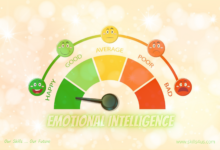
How Leaders Face the Challenge of Balancing Performance Needs and Innovative Transformation
Today, leaders face balancing performance needs and innovative transformation. This challenge is one of the sources of pressure on the interests and work of leaders. The high demand for performance to deliver excellent results in the short term is clearly visible despite a radical transformation in customers’ needs and wants.
So is the urgent need for innovative transformation to reimagine the future of the market and workplace. As well as reinventing the organization’s strategy and culture to win this future.
Balancing performance needs and an innovative transformation is a challenge for strategic leaders. Achieving them together can be challenging and stressful.
That is why the challenge of performing during an innovative transformation has become the driving test of our time.
Facing the challenge
By confronting three sets of questions and creating answers to them, leaders can balance performance needs and innovative transformation and lead their organization to success.
The first set: Time management
- How do you deal with the mess of the present, customer crises, and people’s problems and create a space to foresight the future?
- How can you avoid becoming overwhelmed with everyday tasks that feel so urgent at the expense of work-changing initiatives that are also important?
Answering these questions begins with finding concrete ways to literally save time for the future, both organizationally and individually. Many leaders or managers are so focused on fragile implementation today. That they can miss out on opportunities for work-changing innovations that will define and foresee the future. Accordingly, create the future’s team and task them with looking for exciting and potential opportunities over the next 10 years. This team includes a small group of seasoned managers who are temporarily relieved of their current obligations. They’ll develop ideas that will shape the future vision and projected opportunities for the organization for the coming decades. Knowing that the team’s result will actually achieve is a series of product, technology, and brand innovations that will increase the organization’s performance.
The second set: Personal pressure to lead
- How do you solve problems your organization has not faced before without becoming drained or giving up?
- How do you sustain yourself in a role that seems to be getting more extensive, challenging, and complicated every day?
Answering these questions begins with rethinking your leadership style and rediscovery some leadership wisdom from past great leaders.
“I advise you to adhere to religion and science; work is the latest means to eliminate mental illnesses and overcome the problems facing the person of this age”
His Highness Sheikh Zayed bin Sultan Al Nahyan
We conclude that as a leader, you will be highly respected when you exercise authority over people and rely on it with people. The actual problem of leadership is not how to control people but how to control the situation.
The third set: Encourage employees
- How can you encourage people to remain optimistic and energetic when it is so easy to feel anxious?
- How do we help people enjoy their time and abilities when we ask them to invest them in work?
Answering this set means helping people recover something missing in many organizations. The sense of joy and happiness in the daily work of execution and purposeful innovation.
As an outstanding leader and future manager, you can create a program in the workplace to reinforce pleasure and happiness on the job. One of your essential and main functions is to help your employees remove daily work obstacles that drain energy and joy. The main problem in many workplaces is not unhappy employees, even though many of them. Instead, it is malfunctioning work systems that produce dissatisfied employees and down with their work.
Suppose you can devise answers to these three sets of questions. You have a chance to take the leadership test , and balance performance needs and innovative transformation.



